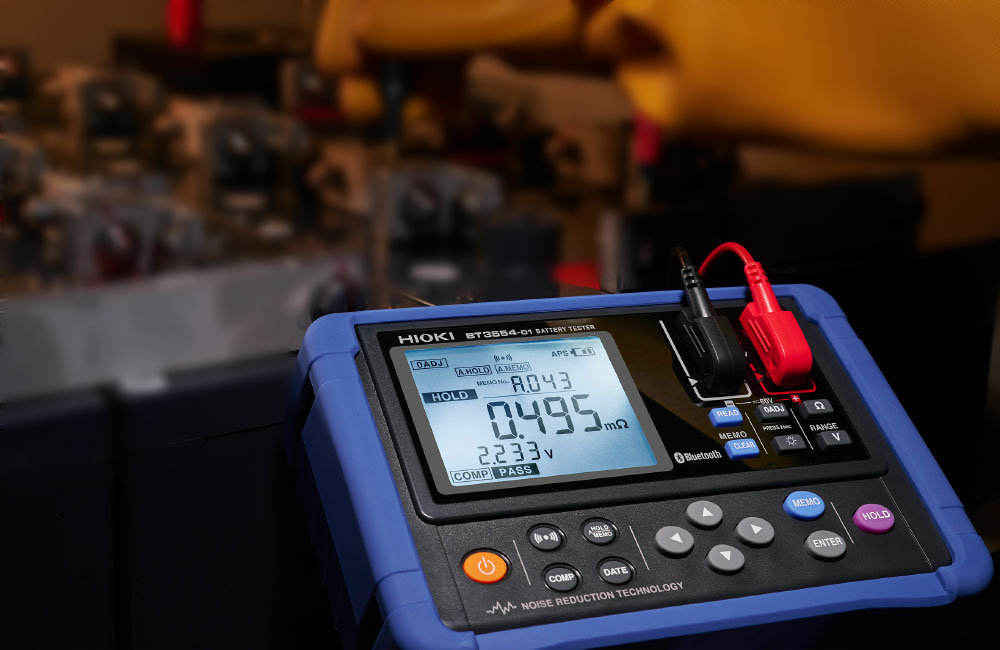
Featured customer
Company V offers equipment maintenance services. The company provides regular maintenance along with rapid response 24 hours a day and 365 days a year for facilities that are required to operate continuously, including equipment operated by communications providers and corporate datacenters run by IT service providers.
Efficiently and accurately diagnosing deterioration in batteries used in uninterruptible power supplies
With datacenters that store confidential corporate information, communications facilities operated by communications providers, and infrastructure run by hospitals, banks, and other businesses, it’s essential to avoid power outages. Consequently, those facilities use uninterruptible power supplies (UPSs) to guard against unexpected failures. However, the lead-acid batteries that are often used in such systems deteriorate with repeated charging and recharging. Daily management of battery status in terms of the extent to which batteries have deteriorated is necessary in order to ensure the dependability of the electricity supply in the event of a grid outage.
Company V performs daily equipment maintenance on behalf of corporate clients in order to ensure that services offered by communications providers, hospitals, banks, and other businesses are not interrupted. The maintenance process includes inspections of UPS batteries, and that work has posed a number of challenges.
The first is poor work efficiency. Many customers are increasing the number of batteries they have, and some sites have more than 200. In order to ascertain each battery’s state in terms of deterioration, workers must measure its internal resistance and DC voltage and then make a PASS/FAIL judgment accordingly. Managing this regularly obtained measurement data required a large amount of time and imposed a heavy technician workload.
Measurement accuracy was also problematic. Due to the nature of the equipment in question, it cannot be powered down for inspections, which must be carried out while the equipment continues to operate. However, noise from inverters during equipment operation inevitably interfered with accurate measurement. Additionally, most facilities have numerous batteries packed into racks, requiring technicians to insert their hands inside the racks in order to measure batteries at the rear. Since more than 200 directly connected batteries have a voltage of several hundred volts, this work posed the risk of electric shock.
Do you have an inquiry or a specific question?
We are ready to find your measurement solution. Simply send us an email or contact a HIOKI partner in your country.